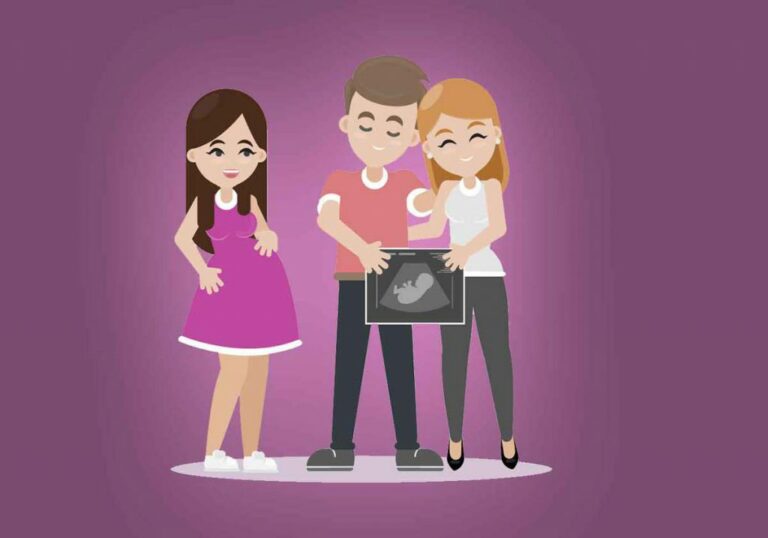Chances of Having Twins with Surrogacy
A lot of intended parents want to know the chances of having twins with surrogacy. Originally, multiple pregnancies were not a rare phenomenon with In vitro fertilization (IVF) process. This is because in order to maximize the chances of successful implantation and pregnancy, multiple embryos were often transferred at the same time. This ensured that at least one embryo was implanted, resulting in a pregnancy. In order to compensate for the lower rates of individual embryo implantation, multiple embryos were transferred to each IVF patient. This consequently led to a higher chance of multiple pregnancies through IVF. But the original goal of IVF is to produce a pregnancy and not necessarily to produce twins.
Over time, however, intended parents got used to building their families through surrogacy. Then they also got adjusted to the notion of having more than one baby at a time and even sometimes asked and sought after it. There was this feeling that getting twins was quite beneficial and enabled them to get two babies for the price of one, thereby saving time and also money.
Why do intended parents want twins?
Surrogacy is not cheap. It is often the reality that some intended parents who want to go through this family-building route have often saved up for months or even years to afford the cost of a gestational surrogate carrying their biological child. So it is fairly common for them to request twins during the surrogacy process. Rather than hoping for one healthy biological child, they wonder if their gestational carrier can carry twins instead. This way, they can have the bigger family that they desire without having to go through multiple surrogacy processes.
In dissimilar situations, having twins may give a genetic connection for both parents involved where it would otherwise be unattainable. This situation can be seen in a gay male couple relationship, whereas in singleton surrogacy, only one of the father’s biological materials will be used for the embryo. But when there is an opportunity for the surrogate to carry twins, each parent can have a genetically related child.

How are multiple pregnancies achieved with surrogacy?
There are two major ways through which twins can be gotten through surrogacy. They are:
Multiple embryo transfer
This is the most common way of achieving multiple pregnancies or twins through surrogacy. In most surrogacy processes, during the embryo transfer the IVF doctor evaluates the qualities of the embryos that were produced to ensure that only the healthiest and best quality ones with the highest chances of implantation are transferred into the surrogate’s uterus.
If more than one embryo meets this criterion, two embryos may be transferred. The chances that both of the embryos will implant are usually quite low, but when they do, it results in a twin gestational surrogacy. However, the decision to transfer multiple embryos is usually decided or determined at the start of the surrogacy process. This is because there are more things to consider in cases of multiple pregnancies. The decision is usually between the intended parents and the surrogate mother. The decision is also included in the surrogacy contract which is signed before the start of the process.
Splitting of a single embryo
This is the less common way of achieving multiple pregnancies. It occurs when a single transferred embryo implants into the uterus, then this embryo naturally divides, resulting in identical twins. This phenomenon is quite rare, only occurring about 0.45% of the time. There is evidence, however, that the chances of this occurrence increase to about 0.95% with IVF.

What are the risks of having multiple pregnancies through surrogacy?
It is important to be familiar with the risks and all the details concerning multiple pregnancies. It is always easier to look at the advantages of multiple pregnancies as an intended parent but it is equally important to consider the risks that will be faced by both the surrogate and the unborn children. There is a reason why many fertility specialists recommend the transfer of only one embryo at a time into a woman’s uterus during an IVF procedure, whether it is for surrogacy or not. When a woman carries more than one fetus, the risks of complications and mishaps that may occur during the pregnancy increase massively. There is a higher likelihood of one or more of the following occurring:
- Low birth weight of the fetuses
- Pre-term labor and delivery
- Preeclampsia
- Placental abruption
- Gestational diabetes
- Delivering through cesarean section
- Anemia
- Pregnancy-induced hypertension
- Fetal respiratory distress syndrome
- Short term abortion
- Polyhydramnios (too much amniotic fluid)
- Postpartum hemorrhage
What are the hidden costs of multiple pregnancies through surrogacy?
There are scenarios or occurrences where the cost of having multiple pregnancies can skyrocket significantly and these include:
- Increased surrogacy fees – This is quite common; most surrogates will charge around 5k-10k more for each extra fetus on top of their base fees. This increased charge is due to the increased risk that the surrogate may face carrying multiple fetuses as opposed to only one fetus.
- Bed rest expenses – Surrogates that are pregnant with multiple fetuses will more likely end up on bed rest than surrogates with only singletons. This is because bed rest is prescribed for people who are at high risk for pre-term births. Due to this fact, the intended parents may need to compensate the surrogate for their time in bed for everything that they normally do which they can’t for the period of bed rest.
- Emotional costs – In addition to the significant financial costs, there is also an emotional cost. In the instance where due to one reason or another, the surrogate loses the fetus. The emotional consequence of losing two children may be significantly more than losing just one.
- Relocation cost and expenses of the intended parents – If the babies are born premature and are in the ICU, the intended parents may need to temporarily relocate to the location of the hospital or clinic where the surrogate mother gave birth. This means taking time off work and possibly losing wages. These costs may add up, especially if the babies remain in the ICU for weeks. Some of these costs are rental cars, food, hotel, or accommodation costs.
The information provided in this blog is for educational purposes only and should not be considered as medical advice. It is not intended to replace professional medical consultation, diagnosis, or treatment. Always consult with a qualified healthcare provider before making any decisions regarding your health. Read more







